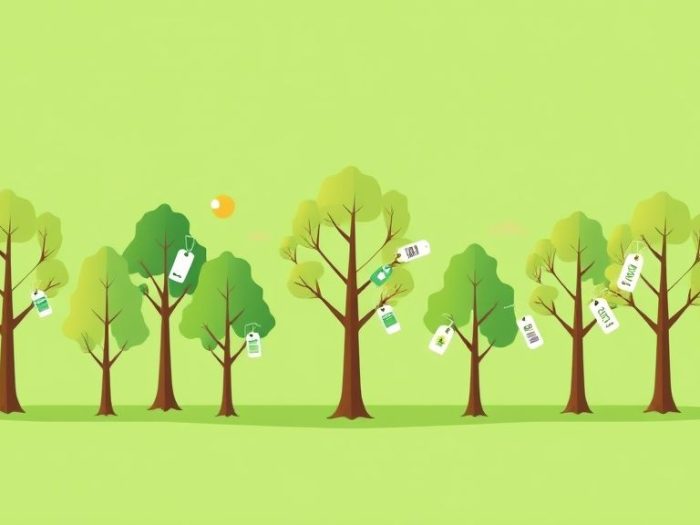Carbon credit markets are a growing financial mechanism to incentivize the reduction of
greenhouse gas emissions. For investors seeking both financial returns and a positive
environmental impact, understanding these markets is becoming increasingly important. This
article provides a comprehensive guide on how to potentially profit from carbon credit
markets while contributing to the fight against climate change.
Understanding Carbon Credits
Carbon credits, also known as carbon offsets or carbon allowances, represent the right to emit
one metric ton of carbon dioxide or its equivalent. These credits are traded in carbon markets.
Types of Carbon Markets
There are two main types of carbon markets:
-
Compliance Markets: These are created by mandatory regulations, where
governments set a limit (cap) on emissions and allow companies to trade allowances.
Examples include the European Union Emissions Trading System (EU ETS). -
Voluntary Markets: These allow individuals and organizations to
voluntarily offset their emissions by purchasing carbon credits.
How Carbon Credit Prices are Determined
Carbon credit prices are influenced by:
- Supply and Demand: The number of credits available versus the demand from emitters.
- Government Policies: Regulations and targets set by governments.
- Economic Conditions: Economic growth can increase demand for emissions allowances.
- Technological Advancements: Development of cleaner technologies can reduce demand for credits.
Ways to Profit from Carbon Credit Markets
1. Investing in Carbon Allowance Futures
You can trade futures contracts on carbon allowances, such as EU Allowances (EUAs).
-
Pros:
- Potential for high returns.
- Leverage.
-
Cons:
- High risk and volatility.
- Requires futures trading knowledge.
2. Investing in Carbon ETFs
Carbon ETFs (Exchange-Traded Funds) track the price of carbon allowances.
-
Pros:
- More accessible than futures.
- Diversification.
-
Cons:
- Expense ratios.
- May not perfectly track allowance prices.
3. Investing in Carbon Offset Projects
You can invest directly in projects that reduce greenhouse gas emissions, such as:
- Renewable energy projects.
- Forest conservation.
- Methane capture.
-
Pros:
- Direct environmental impact.
- Potential for long-term returns.
-
Cons:
- Can be complex and illiquid.
- Requires thorough due diligence.
4. Investing in Companies Benefiting from Carbon Reduction
Consider investing in companies that provide solutions for carbon reduction, such as:
- Renewable energy companies.
- Electric vehicle manufacturers.
- Energy efficiency technology providers.
-
Pros:
- Exposure to related growth sectors.
-
Cons:
- Not a direct investment in carbon credits.
Risks of Carbon Credit Investing
- Regulatory Risk: Changes in government policies can significantly impact carbon prices.
- Market Volatility: Carbon prices can be volatile.
- Economic Uncertainty: Economic downturns can affect demand for carbon credits.
- Carbon Leakage: The risk that emissions reductions in one area are offset by increases elsewhere.
Conclusion
Carbon credit markets offer a unique investment opportunity that aligns financial returns with
efforts to combat climate change. However, it’s essential to understand the complexities of these
markets, the various investment options, and the associated risks. Careful research and due
diligence are crucial for success.
Related Keywords
Carbon credits, carbon market, carbon trading, carbon offset, carbon allowance, EU ETS, climate
change investing, green investing, environmental finance, carbon pricing.
Frequently Asked Questions (FAQ)
1. What are carbon credits?
Carbon credits, also known as carbon offsets or carbon allowances, represent the
right to emit one metric ton of carbon dioxide or its equivalent.
2. What is a cap-and-trade system?
A cap-and-trade system sets a limit (cap) on the total amount of greenhouse
gases that can be emitted and allows companies to trade allowances (credits).
3. What are the two main types of carbon markets?
The two main types are compliance markets (created by regulations) and voluntary
markets (for voluntary emissions offsetting).
4. How are carbon credit prices determined?
Carbon credit prices are influenced by supply and demand, government policies,
economic conditions, and technological advancements.
5. How can I invest in carbon credits?
You can invest through carbon allowance futures, carbon ETFs, carbon offset
projects, and carbon-related stocks.
6. What are carbon allowance futures?
Carbon allowance futures are contracts to buy or sell carbon allowances at a
specified price and date in the future.
7. What are carbon ETFs?
Carbon ETFs (Exchange-Traded Funds) are funds that track the price of carbon
allowances.
8. What are carbon offset projects?
Carbon offset projects are activities that reduce greenhouse gas emissions,
such as renewable energy development or forest conservation.
9. What are the risks of investing in carbon credits?
Risks include regulatory risk (policy changes), price volatility, economic
uncertainty, and the potential for “carbon leakage” (emissions reductions in
one area being offset by increases elsewhere).
10. Is investing in carbon credits a guaranteed way to profit?
No, carbon credit prices can fluctuate, and there are inherent risks involved.
Careful research and risk management are essential.



